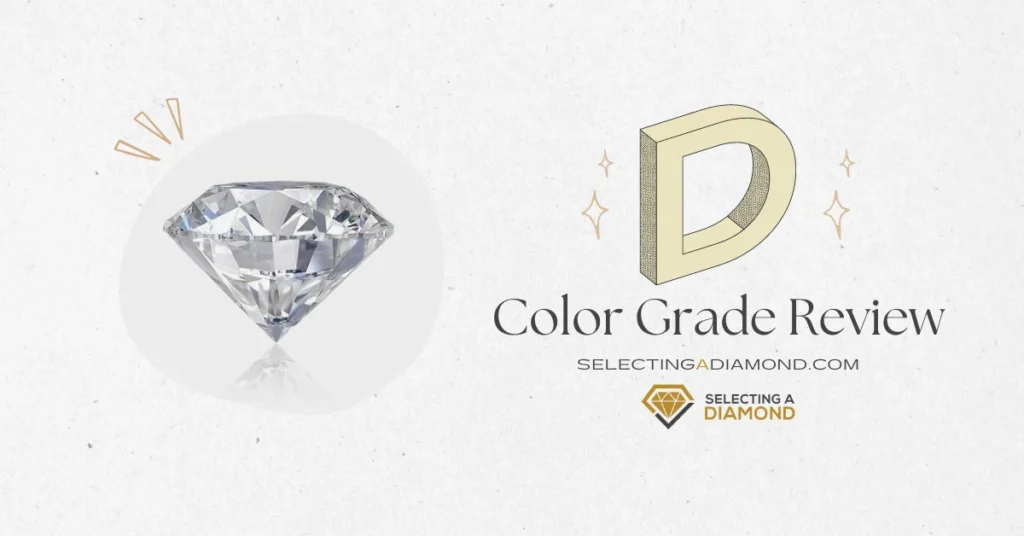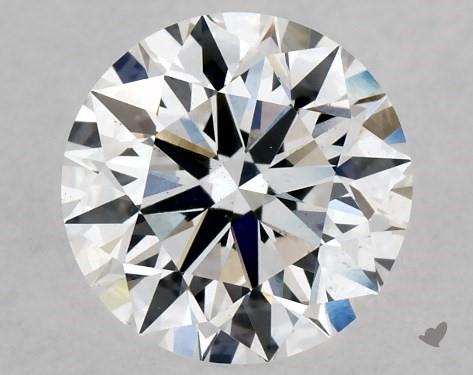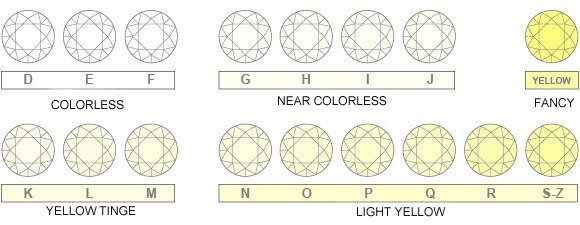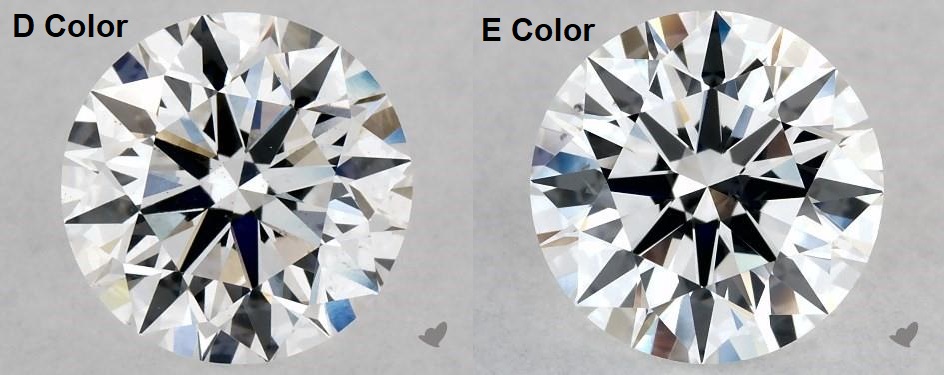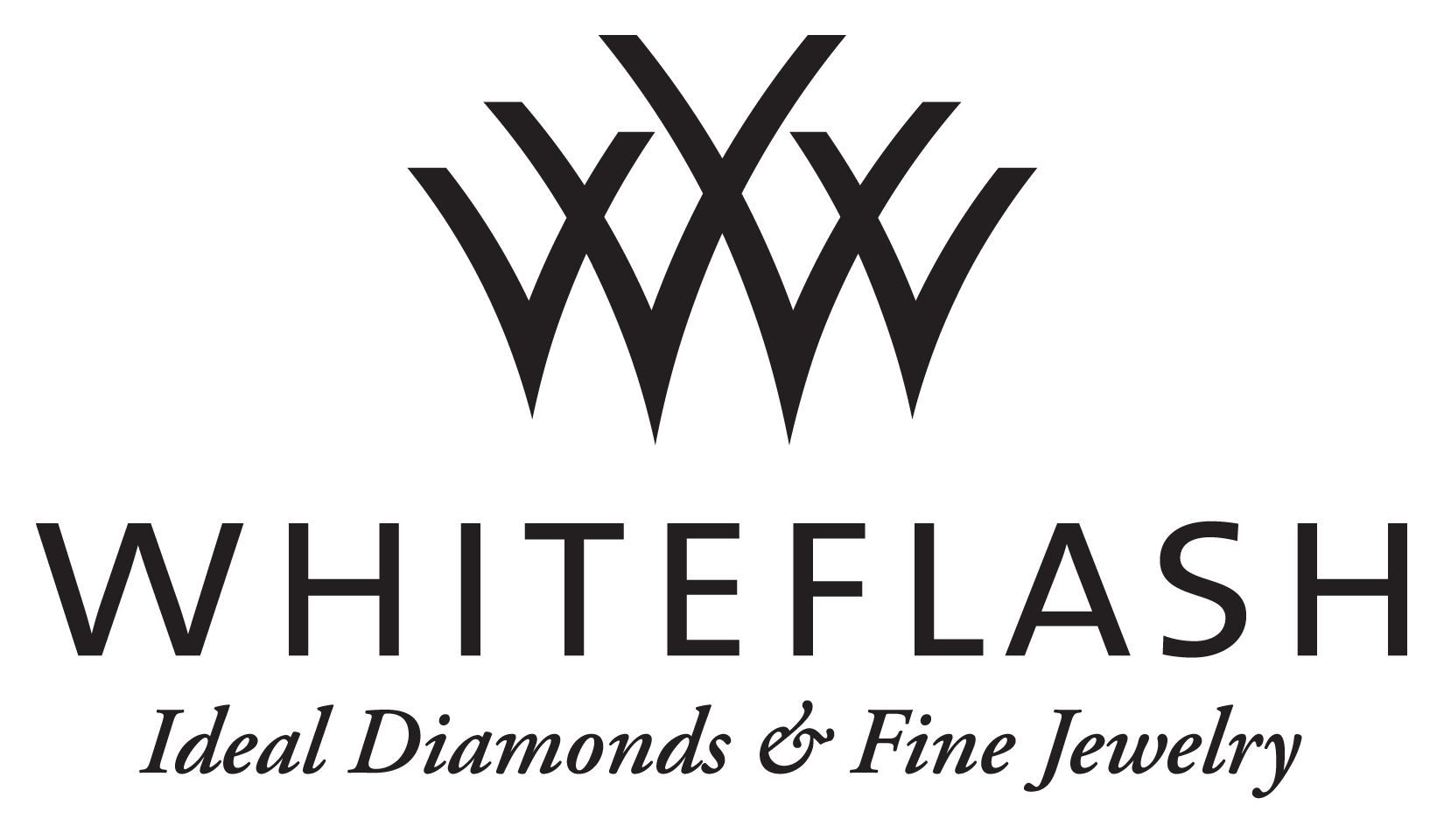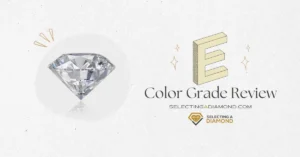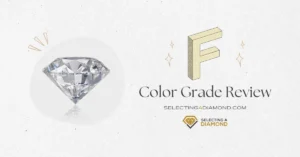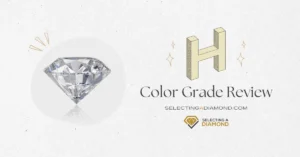We may earn a commission when you purchase through our affiliate links, at no extra cost to you. This helps support our work and allows us to continue providing unbiased, expert diamond advice.
If you’ve searched for the perfect diamond, you may have come across the term “D color grade” and wondered what it means, why it’s insanely expensive, and why color grades start at D not A.
While its name hints at luxury and glamor, D color grade diamonds refer to a standardized rating system used to assign quality levels of diamonds based on their appearance.
D color diamonds are still quite rare, making up around 2% of all diamonds mined. So, how colorless a D diamond is?
Here’s an embellished one, a stunning 1 carat D color diamond on James Allen:
Yes no doubt, it looks fabulous, but just $2k+ more expensive than average price of 1 carat diamond.
Understanding this grading scale is key when selecting the right stone for your needs and budget, so if you want to learn more about this popular attribute, read on!
Here we will provide an overview of what defines a D color-grade diamond and how they can impact cost compared to others. Let’s dive in to know more!
What is the D Color Grade?
D diamond grade is a water-like transparent stone and is non-reflective. Thus, the diamond benchmark is that it is not white and cannot be called a white diamond. It is a hard, pointed rock-like piece mostly used for diamond gifts or engagement rings.
Diamonds within the D grade are the most rare and valuable of all those on the color scale, they display virtually no color, so even a gemologist with a lot of experience & advanced tools won’t be able to detect any color in D diamonds.
It is a very rare, defined, and standard piece of pinnacle gem.
Gemological Institute of America (GIA) has awarded a proper scale to all diamonds ranging from D to Z. Previously known as “Jager Diamonds,” No matter what color stone is produced or found, the universal language for the diamonds makes it the best diamond color of all.
The differentiation is based on the carat, clarity, weight, color, and quality. D color diamonds are of the highest quality, enticing well-shaped gems having a bright, icy bluish-white appearance that looks stunningly beautiful.
Where it Stands in Color Grade Chart?
A color grade ranges (as per GIA definition, which is the global standard) from D to Z, with D standing on top of the diamond color chart, being the cleanest diamond grade in terms of color, which means that a D color diamond has absolutely no color on it, just like water sort of speak.
The first 3 grades in the GIA color chart are all considered colorless (D, E, F), but is there a clear/notable difference between D and the next color grade? Let’s see!
Why Diamond Color Grades Start with D not A?
GIA created the chart, and they have answered this question in their color chart page.
In short, before GIA, there were many different systems that aren’t universal, some adopted in Europe, others in USA, Africa, India, but nothing was global.
Some of these systems used alphabet letters (A, B, C to grade, with A being the best), some included Arabic & Roman numerals, this made more inconsistency and inaccuracy, so to start fresh, GIA skipped all this, and started from D, which is a grade that is “or was, before diamond coloring grades” not a letter associated with being “top of the line”.
D & Neighboring Colors: D vs E Color Grade Difference
When it comes to diamonds, the color of a diamond is determined by examining how light interacts with its surface. Diamonds graded D are considered “colorless” and rank at the highest end of the spectrum, while E diamonds are just one grade lower.
E color diamonds are also rare. The minor difference between E color and D color is virtually undetectable, and it needs a trained eye, microscope, and specialized light sources to tell a difference.
To make it clearer, the difference between E & D can only be seen with a side-by-side comparison of loose stones, so one can never look at a diamond and say “This is an E color”.
When comparing diamonds of similar cut and clarity, E color diamonds are a better value than D color diamonds (yet, both are expensive!)
This is because they have identical properties except for minor differences that aren’t visible at all.
Visual Comparison
The visual comparison is not easy, and neither is the body color. However, the properties help a little in this regard. In addition to the color comes the shape, size, and weight. They are not equal in size; each stone is a little from the other. The rarity of different diamonds is more or less different.
However, the 4Cs help to compare and contrast the gems for better evaluation. For a bird’s eye view, the following images will help to understand the idea more clearly.
Here is the previously mentioned D diamond, side by side with an identical (in terms of other characteristics), but with an E color grade:
How Much Does a D Color Diamond Cost?
Diamond pricing is influenced by many factors, starting with 4Cs (which includes the color), along with less common (yet, important) factors like polish, symmetry, table & depth and others.
Thus, the price varies for the D colored diamond based on the other factors.
Running a search on James Allen to filter on 1 Carat, Ideal cut, and VS2 Clarity shows 160 diamonds, ranging between $7600 to $9500 (remember, for 1 carat only!).
Prices in other shapes are a bit cheaper, but we showed the average for the round shape considering it’s the most popular diamond shape.
Going 1 carat higher, and running the same search, results in a bit insane pricing, starting from $28k for 2 carat diamonds.
Summary
D colored diamonds are undoubtedly beautiful. However, when buying diamonds, they play an important role in signifying. The more colorless the diamond, the high is the price.
D grade is considered extremely expensive, more than $2k than average carat price if you know what 4Cs you should get to guarantee a great diamond.
Whatever color you pick, it’s important to understand what other factors you should consider, so it doesn’t make sense to get a D color diamond, but has visible inclusions!
If you want to get the best bang for your buck, D color isn’t your best choice, not even the whole colorless grades (D-F), since we can’t tell what diamond color is by just looking, so yes, you can go lower to G (and even the H color) while you’re 100% sure that your diamond won’t show any yellow color.
Still not sure where to buy your diamond?
We always recommend shopping diamonds online and created a Full guide to shop diamonds like a Pro.
Among online retailers, here are our favorite stores click their logo to visit store
-
James Allen:
Our favorite online store, best diamond imaging technology available today, comes with the largest collection with more than half a million loose diamonds.
-
Blue Nile:
Widest collection of loose diamonds of all sizes, great imaging technology for most of their inventory (hundreds of thousands of diamonds), great customer support.
-
Whiteflash:
Home Of A CUT ABOVE® Super Ideal Diamonds, they stand out from the crowd by offering premium diamonds cuts, tailored to those who love the details, at great prices too.

